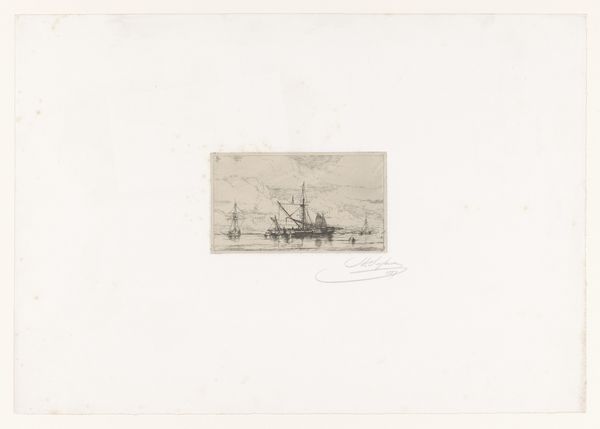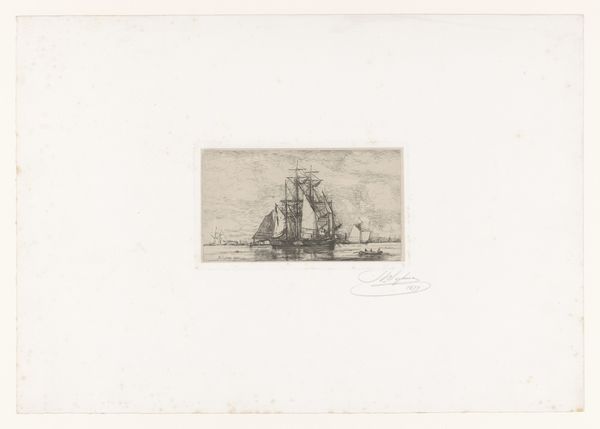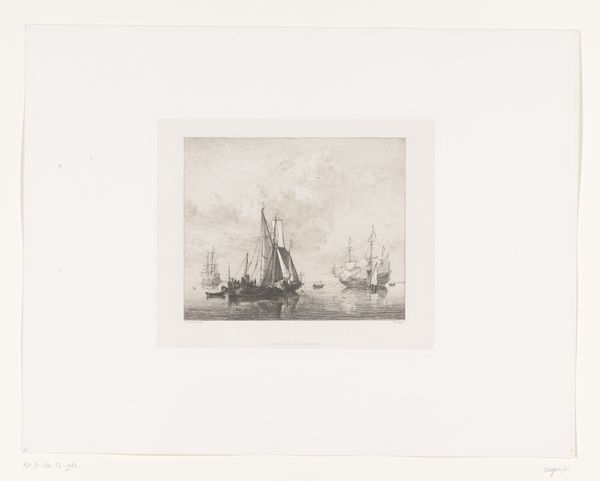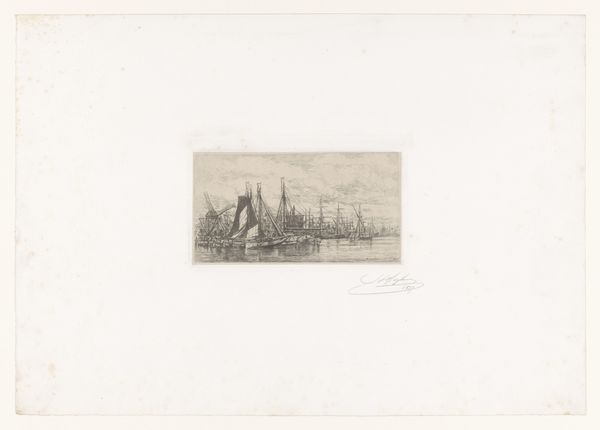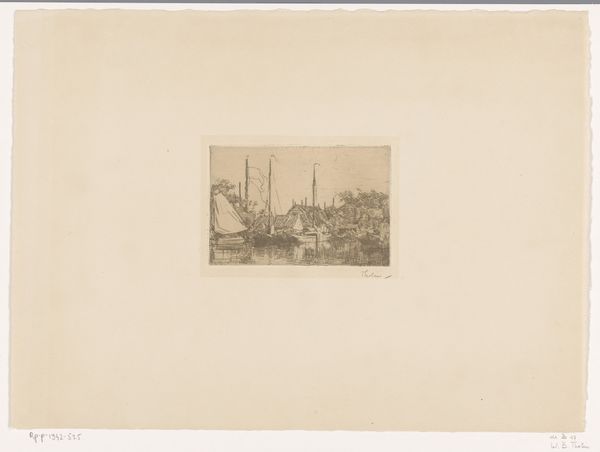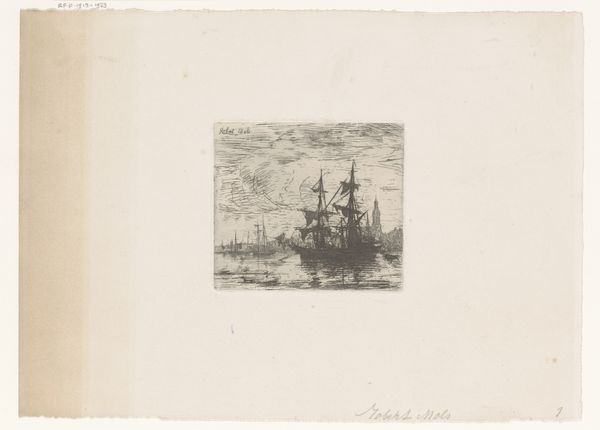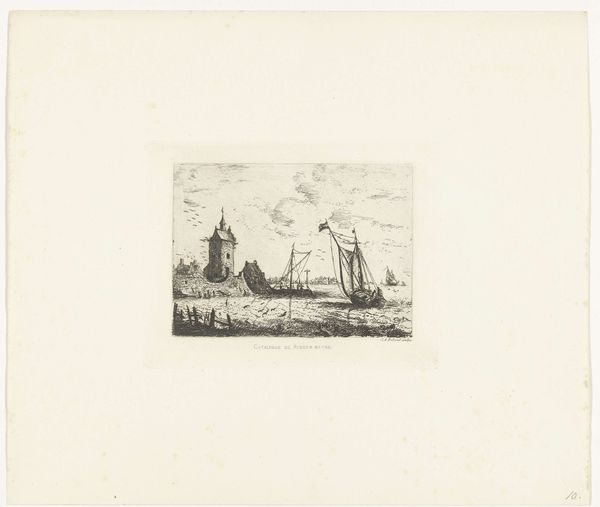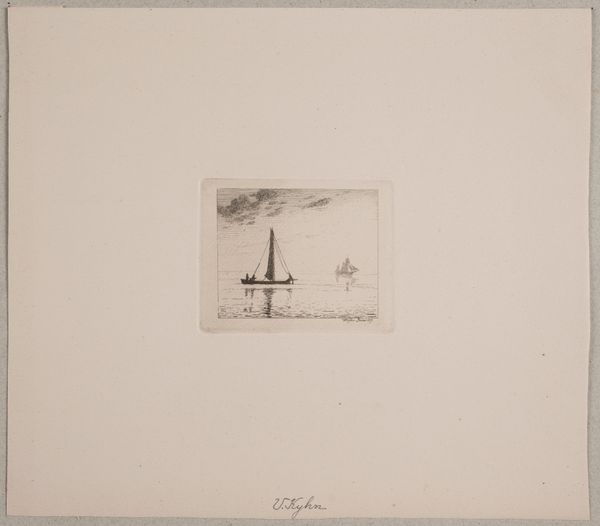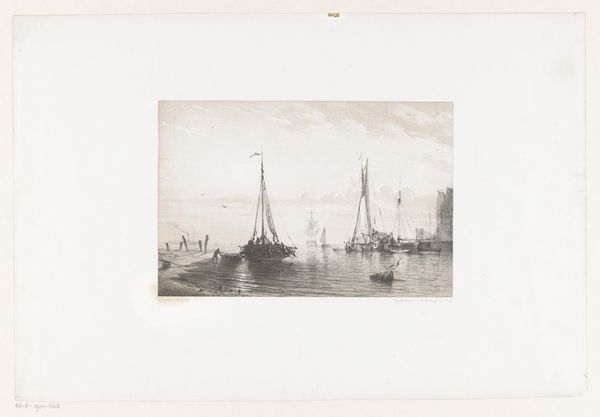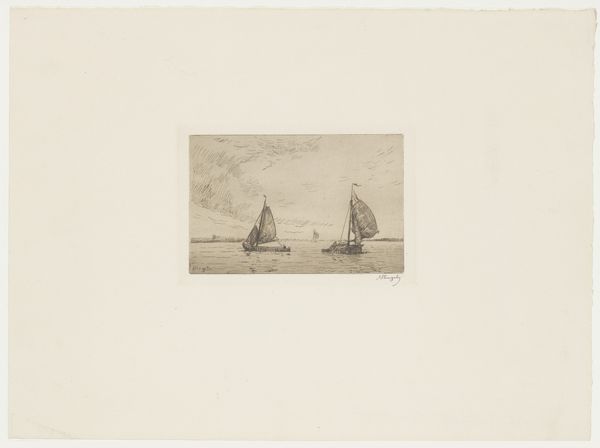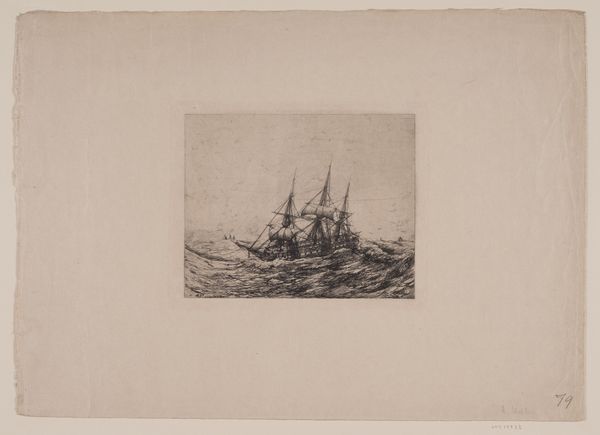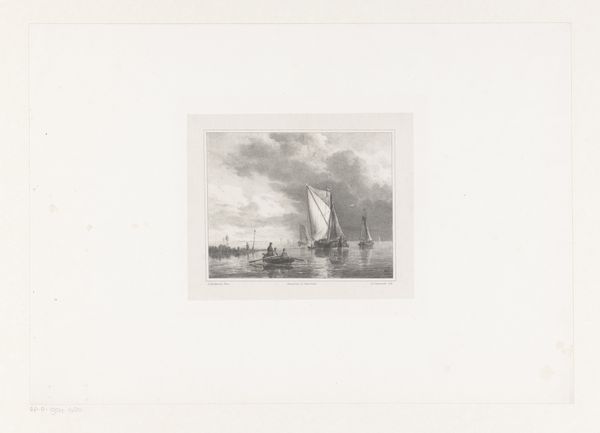
print, etching
# print
#
etching
#
landscape
#
realism
#
sea
Dimensions: height 80 mm, width 139 mm
Copyright: Rijks Museum: Open Domain
Curator: Today we are looking at “Zeilschepen op zee”, or "Sailing Ships at Sea", an etching from 1877 by Henri Seghers. What are your first thoughts on this image? Editor: It feels rather melancholic, despite depicting ships at sea, which typically evoke ideas of adventure and exploration. There is a stillness, a grayness, that gives it a somber mood. Curator: I find it interesting that you say that, as etchings like this one were widely produced in the late 19th century. The multiplication of images like these speak to broader societal changes— the rise of consumer culture and the accessibility of art. The etching process itself allowed for a greater distribution. Editor: But these sailing ships are potent symbols, don't you think? They reflect maritime trade, navigation and naval power – timeless concepts rendered fragile here by the etching medium. They are almost ghostly. Is this some symbolic elegy of a bygone maritime era? Curator: The question isn't necessarily what they symbolize, but who these prints were for. Perhaps the growing middle class with newfound purchasing power and the taste for these picturesque scenes? Editor: It cannot be just about consumers. Seghers chose to depict sailing ships – archetypes of exploration and trade since antiquity. Ships speak of aspirations, potential. Each vessel becomes a signifier charged with longing. The hazy sea evokes ambiguity and mystery. Curator: But by focusing only on symbolic interpretation, aren't we overlooking the very real impact of mass-produced images? What about the materiality, the techniques of reproduction, and the network of economic exchange that enabled these images to circulate so widely? We shouldn't disconnect this from how the artist did the work; each ship becomes a part of a mechanical enterprise in artmaking and society at the time. Editor: I will concede there's no single way to consider art, though in our discussion of sailing ships, Seghers invites more contemplation about man’s relationship to the sea than mass manufacturing of prints, wouldn’t you agree? Curator: Possibly, though the materiality of the piece leads down an exciting path too. This etching reflects the shifting economic tides of its era!
Comments
No comments
Be the first to comment and join the conversation on the ultimate creative platform.
